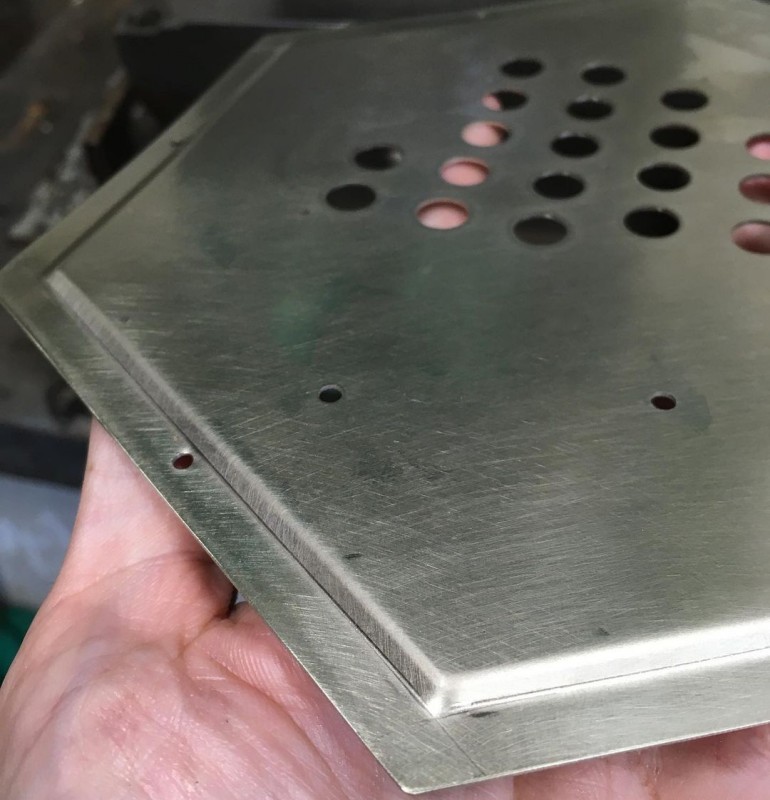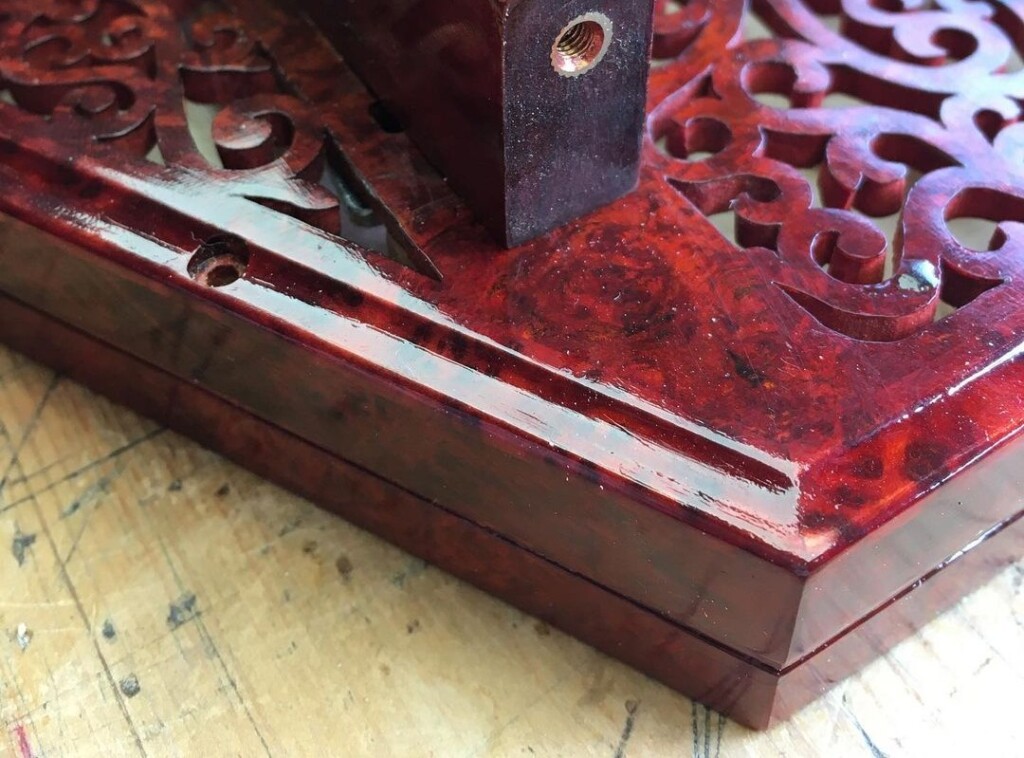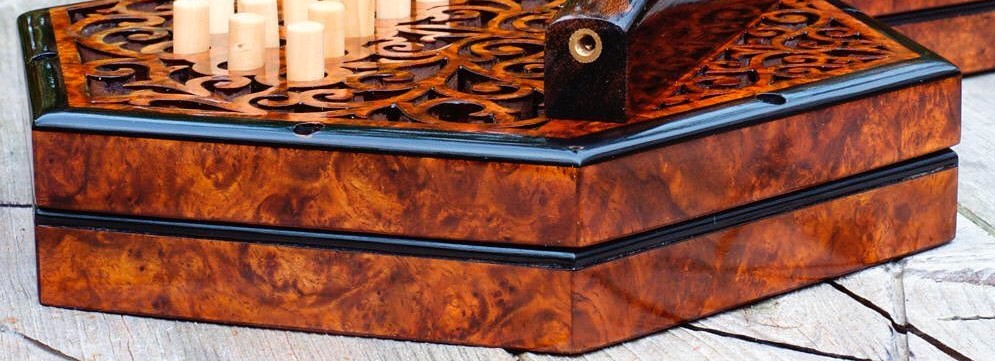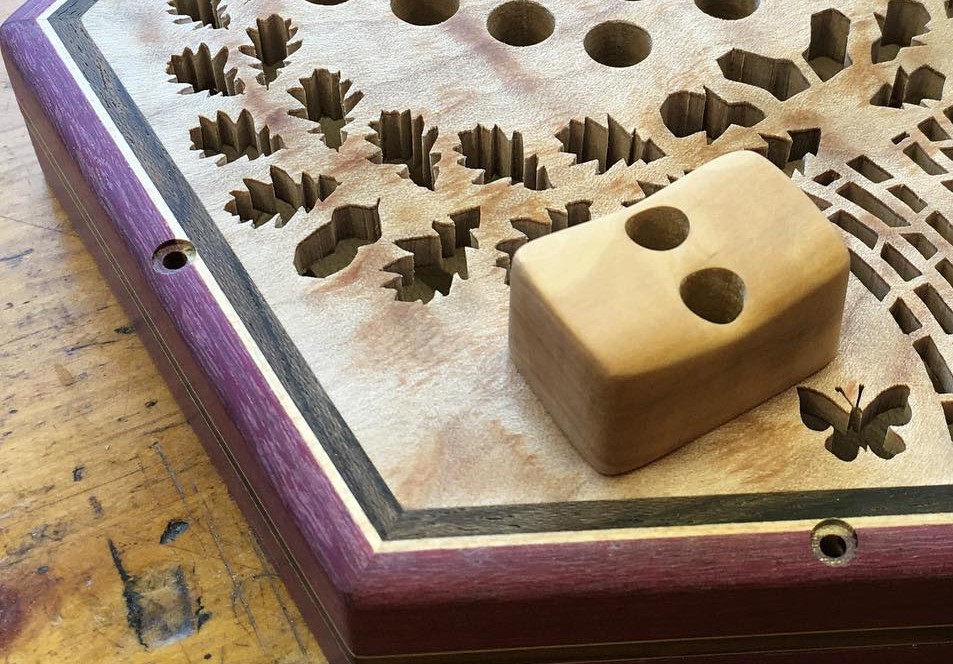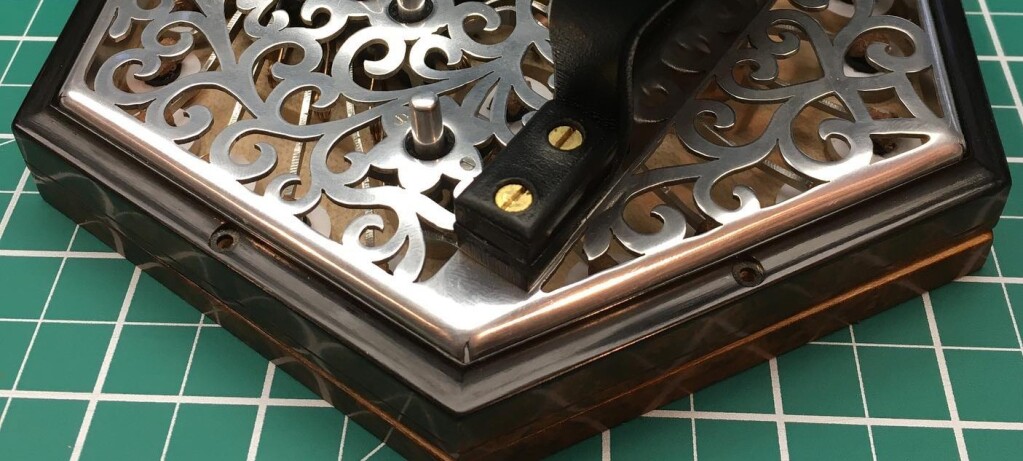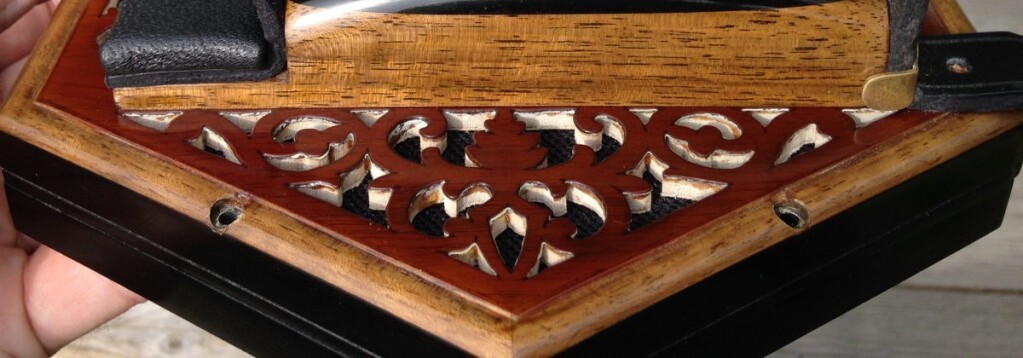When I make instruments with sheet metal end plates that go all the way to the edge of the action box, I typically use a press tool to form a stepped border around the edge of the plate (also known as a crimped edge), which helps to stiffen the plate as well as improving its cosmetic appearance. Most vintage concertinas with metal end plates have this style of border. This photo shows a freshly crimped edge on a nickel silver end plate, prior to polishing or cutting out the fretwork:
On instruments with wooden ends, I do two main styles of border profile. This is the more traditional ogee profile (finish not complete yet in this picture):
This picture shows the other main border profile I use, a simple roundover:
The borders are always made from individual strips of solid wood for structural reasons, which means they are usually made from a different wood from the veneer. This may have a similar or contrasting appearance. It is also possible to incorporate multiple woods into the border strips, for example No. 7 had stripes of dark brown ziricote wood surrounded by white sycamore, surrounded by purpleheart roundover borders matching the purpleheart sides.
When I make inset metal end plates, they are surrounded by wooden borders, which can have the same profiles and wood choices as fully wooden end plates. For example No. 10 had ogee profile Ebano borders:
No. 2 actually had a different border profile, but I found it was a bit tricky to make the corners look neat so I haven’t attempted to replicate it since. It is similar to the roundover except the curve carries on past the flat surface resulting in a slight step up to the central end plate, so you get the comfortable corner of a roundover with slightly more visual definition:
